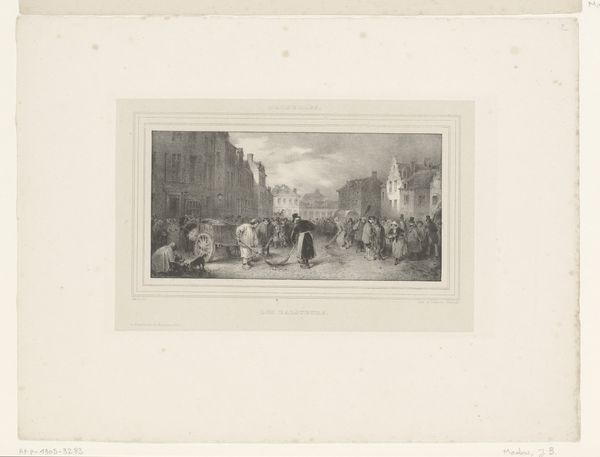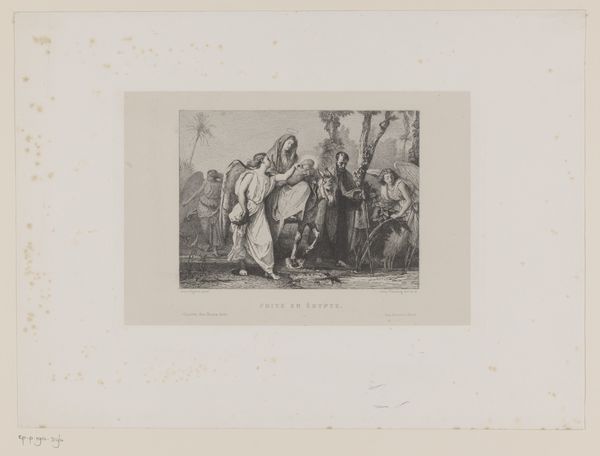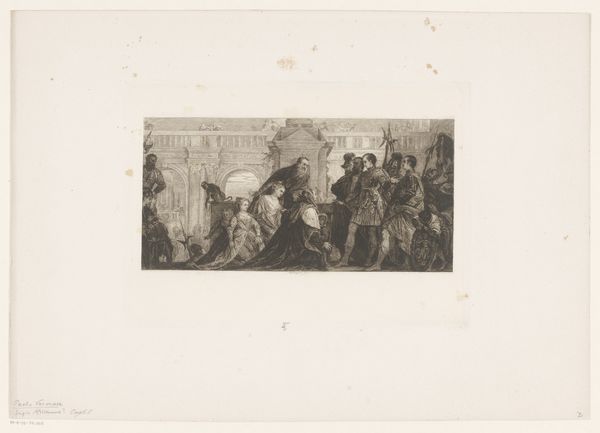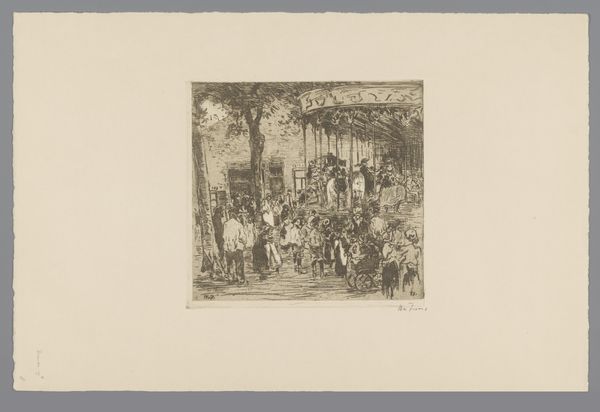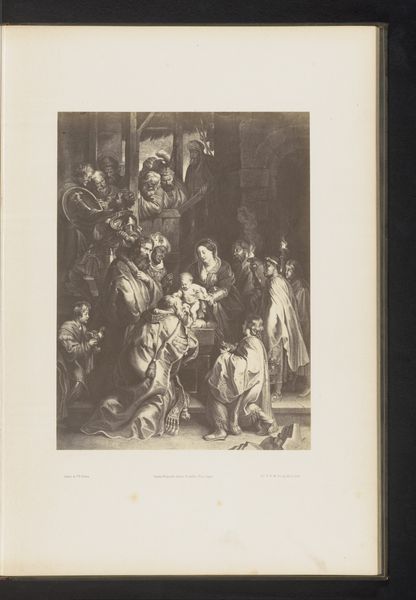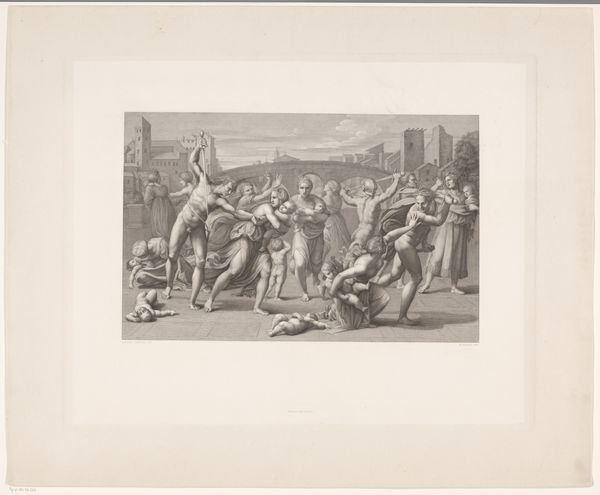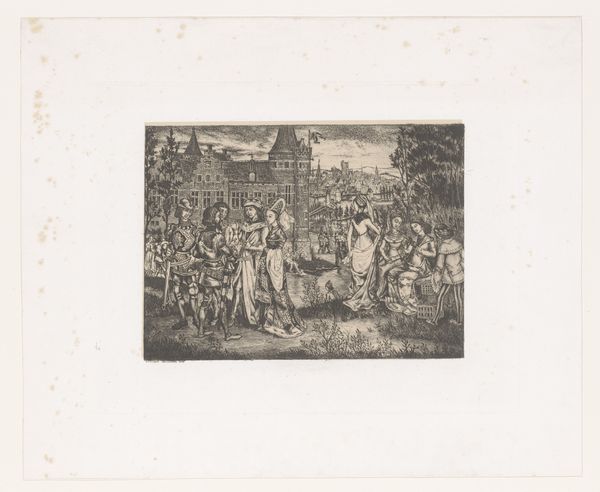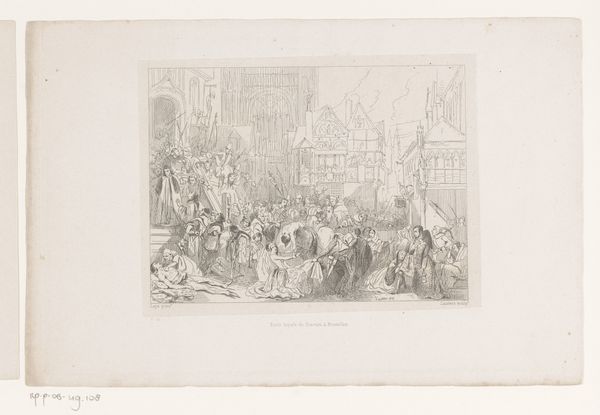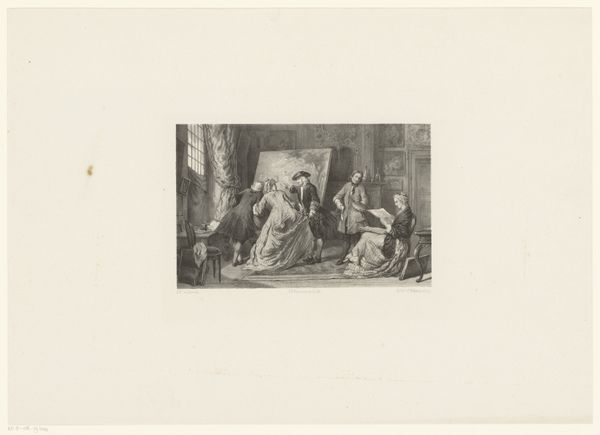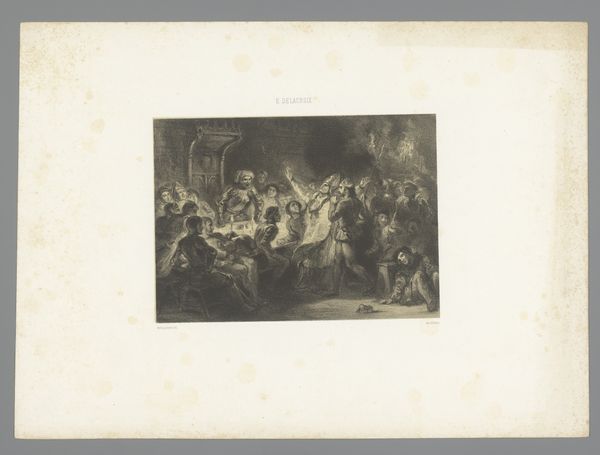
Fotoreproductie van een gravure van een portret van verschillende schilders en beeldhouwers, waaronder Jan van Eyck, Titiaan en Anthony van Dyck before 1858
0:00
0:00
print, engraving
#
portrait
# print
#
history-painting
#
engraving
Dimensions: height 109 mm, width 275 mm
Copyright: Rijks Museum: Open Domain
Curator: Up next, we have an intriguing photo reproduction of an engraving—a veritable who’s who of iconic painters and sculptors, featuring the likes of Jan van Eyck, Titiaan, and Anthony van Dyck. Dating to before 1858, its creator is sadly unconfirmed. Editor: My first impression is that it looks staged, like a class photo from some art historical academy. There’s something amusingly formal about the arrangement, everyone so serious. Curator: I agree. While the artist remains anonymous, this engraving acts as an early attempt to visually capture the lineage and shared legacy of art history. The composition invites the viewer to consider how artistic practices, skills, and values have been passed down through generations. Note how it recalls Renaissance ideals. Editor: Absolutely. The way the figures are grouped against a backdrop with classical architectural elements enhances the print's appeal to the Western canon. This almost feels like a theatrical production, and how they're framed is important. Do you agree? Curator: I see it. There's a tension, right? The rigid format—the photographic element combined with a highly choreographed staging in a 'history painting'—conflicts with our sense of individual creativity. The material presence of each artwork might differ, yet here the narrative feels overly structured. This is history being framed, literally. Editor: But isn’t there an undeniable charm in seeing them all gathered like this? These masters in monochrome, pondering their place. Curator: Undeniably. Perhaps the point lies precisely in its artifice. It reminds us that history itself is a constructed narrative—a series of curated moments meant to guide our understanding of art's evolution. And, like any curated tale, it reflects its creator's biases, conscious or otherwise. Editor: A visual prompt to remember and perhaps reconsider everything we think we know. Thank you.
Comments
No comments
Be the first to comment and join the conversation on the ultimate creative platform.



